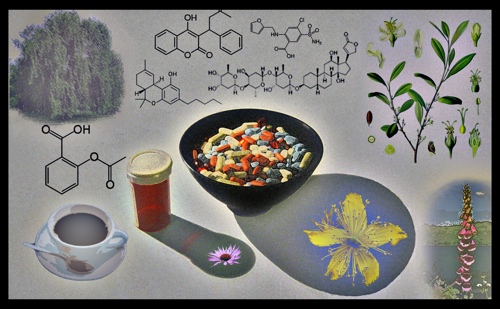
Medications
last authored: March 2010, David LaPierre
last reviewed:
Introduction
Medications are incredibly important components of health care, offering important cures in the case of many infections, extension of life in various acute and chronic conditions, relief of pain and suffering, and improvement of many other symptoms of chronic diseases. However, medications are not a perfect solution. In many countries, approximately 20% of health care costs go to drugs (CIHI, 2008). Drug-drug interactions are common, and adverse drug reactions are a leading cause of emergency room visits, disabilty, and death.
Given their cost and potential harm, drugs should be prescribed and used carefully, with risk vs benefit considerations and clear descriptions on proper medication use.
important resources:
- WHO Model List of Essential Medicines (2013)
- WHO Model List of Essential Medicines for Children (2013)
Common Medications
The following is an overview of common and important medications.
antimicrobial psychotropic cardiovascular-renal |
analgesics other
|
respiratory |
|
What is a Drug?
Drugs can be classified according to many different factors. Pharmacotherapeutic classes refer to the clinical condition, while pharmacologic classes are based on a drug's molecular mechanism of action and the body system affected. A hybrid approach has been taken with the above list.

created by Robert King
The term 'drug' can also refer to any biologically active compound that is taken with the intent to produce a change in the body. This more inclusive definition also includes:
a) substances such as caffeine, nicotine, and alcohol
b) biomolecules such as vitamins, amino acids, and minerals
c) 'natural health products' such as ecinacea and St John's Wort; and even d) cosmetics.
In some sense, the distinctions between a product sold by a pharmaceutical company and a vitamin fall to regulation and patents.
Prescribing Drugs
While relative risk reduction (RRR) tends to remain constant across populations, the absolute risk reduction (ARR) can change with changing risks. As ARR increases, the number needed to treat decreases.
Adherence
Compliance is affected by a number of factors
- number of drugs
- cost
- side effects
- lack of understanding
- can't read instruction
- can't open bottle
- dementia
There are a number of innovative aproaches to medication adherence:
Routes of Administration
Drugs can be given orally, intravenously, transdermally, intramuscularly.
- oral
- topical
- parenteral
- inhalation
- percutaneous
- intramuscular
- mucosal
- depot
Oral
- convenient
- subject to first-pass effect
- not suitable for easily metabolized, acid labile, or GI irritants
Topical
The vehicle is the base of medication.
- powders: dry skin through evaporation. Not a good vehicle.
- liquids: hydrates skin, but then dry it out when exposed to air
- greases: ie paraffin (vaseline) - hydrates skin
- shake lotion: powder + liquid together dries skin
- paste: grease + powder - hydrates skin and allows it to breathe
- use in ie diaper rash
- ointment: liquid in oil: hydrating
- cream: oil in water: more drying
- compresses:
- water
- aluminum acetate (Burrow's solution)
- salt water
- vinegar
Medication units:
fingertip units (FTUs): about 0.5 gram, enough to cover both sides of one hand. Body takes ~20 g to cover it all, except scalp.
The active agent is the drug used.
- steroids:I is super strong, VII is very mild.
- I psoriasis, lichen planus, discoid lupus, severe eczema, lichen simplex chronicus, severe atopic dermatitis
- tachyphylaxis - eventual loss of clinical effect and move from vasoconstriction to vasodilation
- beware adrenal suppression
- tars
- karatolytics (ie salicylic acid) - peels off stratum corneum
- antibiotics
- retinoids
- alpha hydroxyacids
Adjuvants are chemicals added to stabilize active agents.
A general rule: if it is dry, wet it. If it is wet, dry it.
Parenteral
- rapid
- 100% bioavailability; no first-pass effect
- costs and risks involved
Inhalation
- systemic delivery of potent drugs
- local for respiratory
- many drugs can be irritating to lungs
Percutaneous (transdermal)
- systemic or local
- can achieve long-term delivery of controlled dose
- slow absorption and onset
Intramuscular
Mucosal
- rapid and usually local, but can be systemic
- bypasses first-pass effect
- suitable for acid-labile drugs
- not as convenient
Depot
Depots can be useful for compliance, ie for antipsychotics
- half-life doesn't change; rather, absorption half life is increased
- leeches out very slowly from ie seseame oil
- switching from oral dose to depot -
Resources and References
- rationalprescribing - site for medical learners
